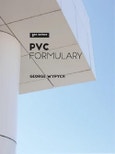The book has five chapters, each containing invaluable information for PVC manufacturers, processors, and users. In addition to the content of the previous edition, the book provides many new formulations that were introduced in the last six years. In the first introductory chapter, the new product development, product re-engineering tools, and market for PVC products have been discussed.
In the second chapter, polymer properties determining its proper selection are discussed. Commercial types and grades, polymer forms, and physical-chemical properties of PVC are discussed in detail. All essential information required for the decision-making process is presented in a clear way in order to provide the reader with the necessary data.
The third chapter contains information aiding in the selection of any required additives. Twenty-four groups of additives are used in PVC processing to improve their properties and obtain the set of product characteristics needed by the end-user. Similar to the previous chapter, the information is concise but contains much-needed data to aid the reader in product development and reformulation.
The fourth chapter contains more than 600 formulations of products belonging to over 20 categories derived from typical methods of production. Formulations come from patents, publications in journals, and from the suggestions of raw material suppliers. A broad selection of formulations is used in each category to determine the essential components of formulations used in a particular method of processing, the most critical parameters of successful products, troubleshooting information, and suggestions of further sources of information on the method of processing. This section results from a review of thousands of patents and research papers, and information available from manufacturers of polymers and additives.
The final chapter contains data on PVC and its products. The data are assigned to one of the following sections: general data and nomenclature, chemical composition and properties, physical properties, mechanical properties, health and safety, environmental information, and use and application information. The data are based on information contained in over 1450 research papers, and it presents the most comprehensive set of data on PVC ever assembled.
The concept of this and a companion book (PVC Degradation & Stabilization also published in 2020) is to provide the reader with complete information and data required to formulate successful and durable products and/or to evaluate formulations on the background of compositions used by others. For scientists and students, these two books give a complete set of the most up-to-date information, state-of-the-art, and data required for the development of new ideas and learning from a comprehensive review contributed by the author of 5 books on PVC written in the last 30 years.
Regulatory agencies, consumer groups, and law enforcement agencies will also find this book invaluable because it contains a realistic composition of products produced today, based on broad research of information that no other available source offers.
There were many good books published on PVC in the past which are still in use today. Their main drawback is that they contain information which frequently does not apply to today’s products and thus creates confusion which is avoided with these two books: PVC Degradation & Stabilization and PVC Formulary, which were written with the goal to give the most current information to those who need it today.
Table of Contents
1 Introduction









